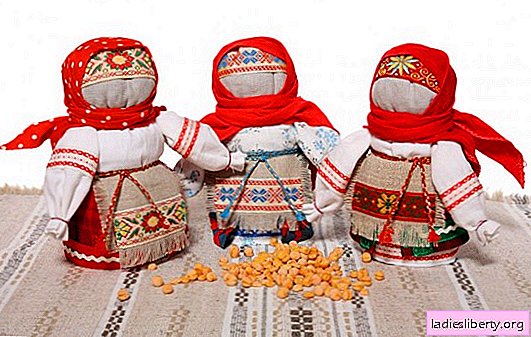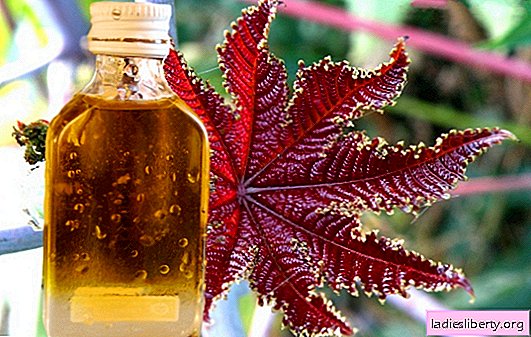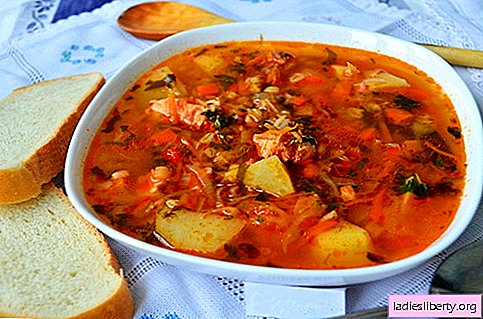
In Slavic culture, amulets for a child are an integral part of everyday life. The amulets were intended not only from evil eye, spoilage, malicious intent and, so-called, evil, they helped the child find peace of mind, calmness, set up in the right way. There were many charms designed to be worn at different ages. Only mom could make a talisman, in extreme cases, a grandmother on the mother's side.
Many peoples believe that mother protection is one of the strongest. It is interesting that for children from birth to three years old they did not make amulets, they were protected in another way. Everything in more detail in the article.
Charm for children from 0 to 3 years
According to Slavic traditions, newborns were wrapped in a shirt of one of the parents, the girls in the maternal, and the boys in the father's. At the same time, up to three years, the child was not wearing body amulets, it was believed that this could interfere with the development of the body and soul.
What served as a charm for the baby? The first is the parental shirt.
The Slavs believed that she protects the entire space around the newborn. Charms were embroidered on the shirt.

charms
The cradle and the house itself served as another amulet. In the room where the cradle for the baby was located, a bathing wreath was hung on the door, in a red corner, and before the spread of Orthodoxy under the altar with the gods, they laid an embroidered towel.
A rowan cross was also hung over the door, protecting from any evil.
Charms can be embroidered on a towel, a blanket, in the form of a panel on the wall. They were also made of wood and painted. Below are some charms for children:
- One of the traditional children's amulets is Alatyr. It was believed that he protects the child from birth for life.

- Another powerful defender is the Rodovik, the Sign of the Kin. His defense also extended from birth to life. At first they put him next to the child, and after 10 years he already put it on himself.

- A silver bell drove away evil spirits.

- Konyashka - floor wooden swing;

- The swaddling doll served as a powerful amulet. He looked like a baby in diapers, only smaller. She was put in a bed so that evil spirits would harm her, not the child. At the same time, a swaddle was made without the use of needles and threads.

As we see, nothing was put on the child himself. The charms were various items made specifically for protective purposes.
Important: when embroidering amulets on fabrics, they tried to use red threads.
Charm for a child from 3 to 7 years
Upon reaching three years, it was possible to put on the first amulet. Of course, they were made independently of wood, birch bark, fabric, silver. In the northern regions, animal bones and horns were used.
The embroidery on the clothes was no different. Girls and boys wore linen shirts, sewn from the clothes of their parents. Until the age of seven, children were called "Ladins" by the name of the Goddess Lada.
Children often wore a “radinets” that gave joy and pacification, and “hoops” were hung on their belts - small spoons, symbols of satiety and prosperity, “keys”, symbols of knowledge. Bells that could scare away evil spirits could hang on the clothes themselves. Rings and other pendants were also made, for example, leather, birch bark, made of fabric. Signs could be embroidered on them: “Ladin”, awakening the feminine essence and intuition in girls, “Molvinets”, protecting from the evil eye, evil hexes, “light”, bringing good luck and happiness, “gender”.

Charm for a child from 7 to 14 years old
When the child reached the age of seven, parents and family evaluated their abilities, children began to learn the basics of crafts. Charms also made different, depending on the destination. Images of the guns were made for boys, anvils for the like, and girls for spindles. Totem animals could also serve as amulets - they made figures of wood, stone, bones or fabric with straw, they were also embroidered on towels, napkins or made panels.

Charm for a child after 14 years
For the Slavs, this age was considered the onset of maturity; children underwent a ceremony of initiation and name-giving. Of course, the child had his own name, but he was given a name that connects him with his race, reflecting the quality of his soul and character, a special charm was made to make this name take root. At about 11-14 years old, the child was already called a lad and a rite of passage was performed.
The charms were marked with signs of spirits, totems, Native Gods, patronizing the entire Family. So the Slavs passed on the generic qualities of character, signs of estate.
Here are some charms that children could start wearing by this age:
- "carol" - made a man braver, strengthened the will to win, gave strength, defended during the battle, helped in everyday work:

- "Rodimich" - the sign of the Kin that protects from birth and for life with the help of the power of ancestors;

- “lunnitsa” - a guardian of love and happiness, helped to successfully marry, bear and give birth to a healthy child, protected from female ailments;

- "makosh" - a charm in honor of the goddess Makosh, helped create a family, guarded the family hearth;

- "Molvinets" protects children from evil words, evil eye, bad intent;

- "Kolovrat" - protects from diseases, enemies, damage, its power comes from the sun;

- “Lada star” - preserved the beauty, youth of the woman, protected from evil spirits and evil intent;

- "spring" - a powerful security charm for the household;
- "ax of Perun" - helped a man survive on the battlefield, protect his native land, helped to remain faithful to his wife;

These are just a few, traditional and most common. In fact, there were many more.
Children's amulets were made from all improvised materials, for example: cotton, linen, various threads, birch bark, silver, bronze, wood, peeled animal bones, horns, stones.
For the manufacture of dolls, only natural fabric is taken. Oak, linden, aspen are special materials, birch is the most common. You can’t use a chicken foot to create a talisman, only bones, horns, and animal fangs are taken.
Revitalization amulets for a child
It was not enough just to make a talisman and give it to the child. It was necessary to breathe life into it, revitalize, share your strength, invest a part of the soul.
First, the amulets were cleaned, then they read a special conspiracy, and then they used it for its intended purpose.
However, if the amulet was made a good man, he was not cleaned. While working on a talisman, the master had to think about the good, not to keep evil intent in his head and heart. It turned out that the amulet became kind and clean initially.

If the amulet was bought or exchanged, received as a gift from strangers, a rite of purification was necessarily performed on it. For example, it was put in salt for several days.
To revive the amulet, they laid it in the hand, then mentally turned to it, stroked it, asked for protection. The mother or father sometimes again took out the amulet and uttered requests for protection to it until the child was small. The conspiracy was addressed to the Gods, the spirits of the Family, the higher powers.
How were baby charms used?
Everything is simple here, they were either put nearby or worn. For example, very young children were put under a bed, cradle or cradle. Another amulet was placed under the pillow, at the head of the bed, under the mattress. Children were given amulets as a toy. Could be hung above a door or windows. After three years, they were put on the body. When the mother carried the child in her arms, she kept the amulet in her clothes, in her pocket or put it on her neck.
The birth of children, the upbringing of the mind and soul of a child, the personification of a worthy continuation of the Family - the Slavs considered the main purpose of the family, the task of the married couple. Child protection was an important aspect of parental care. The power of amulets had a great impact on man. Slavic charms are used today, the main thing is to use them for their intended purpose.













